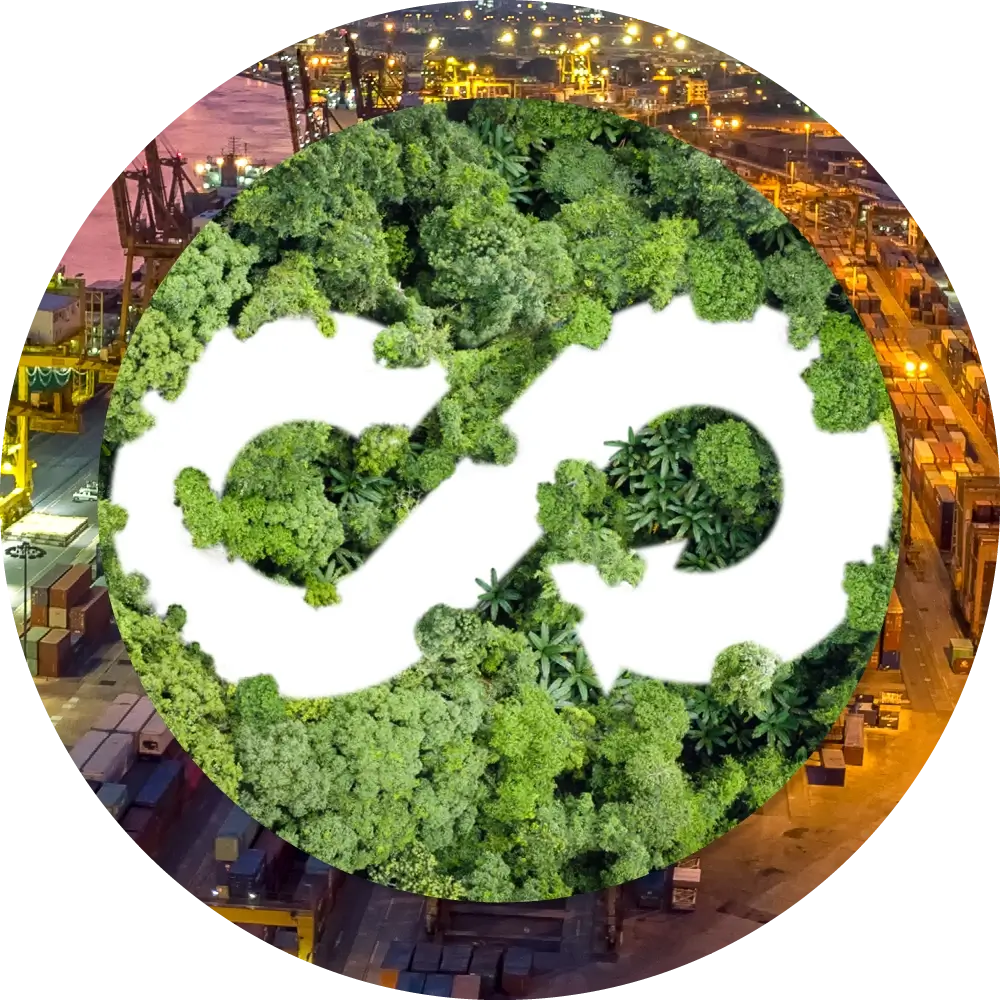Sustainability is more than a trend—it’s a revolution reshaping how we create, consume, and care for our world. At Genumark, we believe that understanding the key terms of sustainability is not just a learning process but a powerful tool that empowers you to drive meaningful change. Let’s explore the language of sustainability and discover how your informed choices can leave a lasting impact.
The Invisible Trail of Our Actions

Ever wonder how your choices impact the planet? Your carbon footprint is the total amount of greenhouse gases (like carbon dioxide and methane) generated by your activities. It’s not just about driving cars or flying planes—it’s also about the energy used to produce goods or power facilities. Reducing your carbon footprint is one of the most significant ways to fight climate change.

Turning Old into New

We all know the basics: toss that plastic bottle in the blue bin. But recycling goes deeper. It’s about breaking down old products into raw materials that can be reimagined. For instance, rPET (recycled polyethylene terephthalate) transforms plastic bottles into durable fabrics. Every recycled product is a step towards reducing landfill waste and conserving resources, making you a responsible and proactive part of the solution.

Creativity Meets Sustainability

Think of upcycling as recycling with a creative twist. Instead of breaking items down, upcycling transforms them into something new and useful. An old ladder becomes a bookshelf, or fabric scraps become trendy tote bags. It’s sustainability with style!

A Problematic Plastic

PVC is everywhere—from shower curtains to food wrap—but its lifecycle comes at a cost. Producing and discarding PVC releases harmful toxins like dioxins into the environment, endangering ecosystems and human health. Understanding this material helps us seek safer, more sustainable alternatives.

The ``Forever Chemicals``

Since the 1950s, PFAS have been prized for resisting heat, grease, and water. However, these man-made chemicals don’t break down naturally and are linked to serious health risks, such as cancer and thyroid disease. Choosing PFAS-free products is not just a step towards protecting ourselves and our planet but a cautious and health-conscious decision.

Nature’s Processes

Biodegradable materials are designed to decompose naturally through organisms like fungi or bacteria, turning into compounds found in nature. But beware—biodegradability doesn’t mean it happens quickly or in all environments.

Beyond Biodegradable

Compostable products go further by disintegrating into non-toxic, natural elements under specific conditions. Industrial composting facilities often provide the heat and humidity needed to complete this process—perfect for food waste and specially labelled materials.

Two Economic Paths

Our current linear economy is a one-way street: extract, produce, discard. The circular economy, on the other hand, sees waste as a resource. Reusing, repairing, or recycling materials minimizes environmental impact and maximizes resource efficiency.

Trust in Transparency
When it comes to sustainable products, certifications provide peace of mind. These third-party verifications ensure ethical sourcing, safe working conditions, and environmentally friendly practices. Here are some key certifications to know:

- Blue Sign: Targets harmful substance elimination in textile production.

- OEKO TEX 100: Certifies products free from harmful substances.

- GOTS: Focuses on organic fibre production and eco-friendly manufacturing.

- GRS: Verifies recycled content and responsible production.

- FSC: Promotes responsible tree harvesting and forest conservation.

At Genumark, we’re committed to making sustainability accessible and actionable. Whether sourcing eco-friendly merchandise or exploring ways to reduce your environmental impact, understanding these terms is a great starting point. Together, we can build a future where every choice contributes to a healthier planet.
Stay tuned for more insights, tips, and sustainable solutions in our upcoming blogs. Want to read more right now? Learn about different materials used when creating apparel and how they impact our planet in our “Understanding Product Materials: Clothing” piece!




